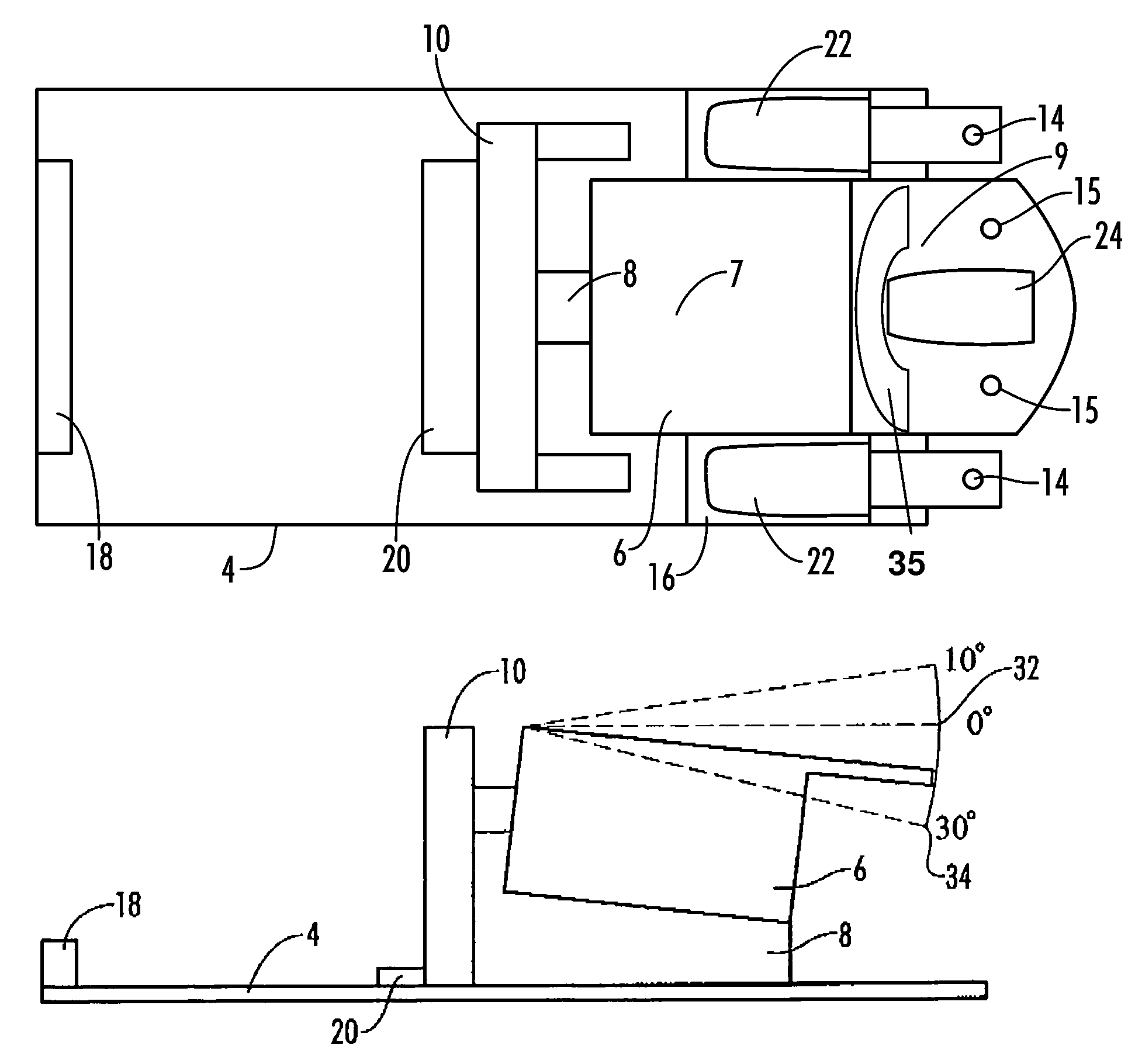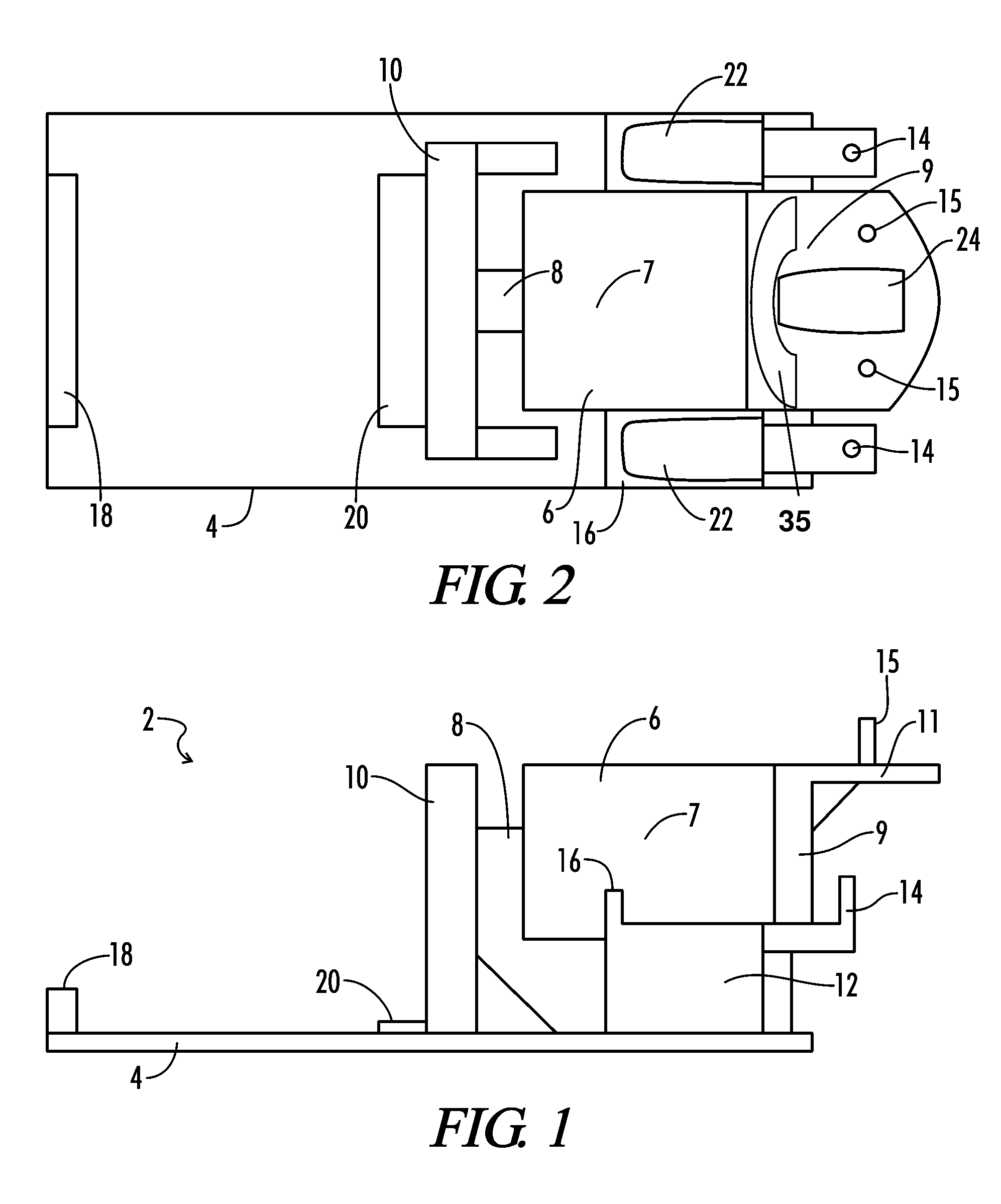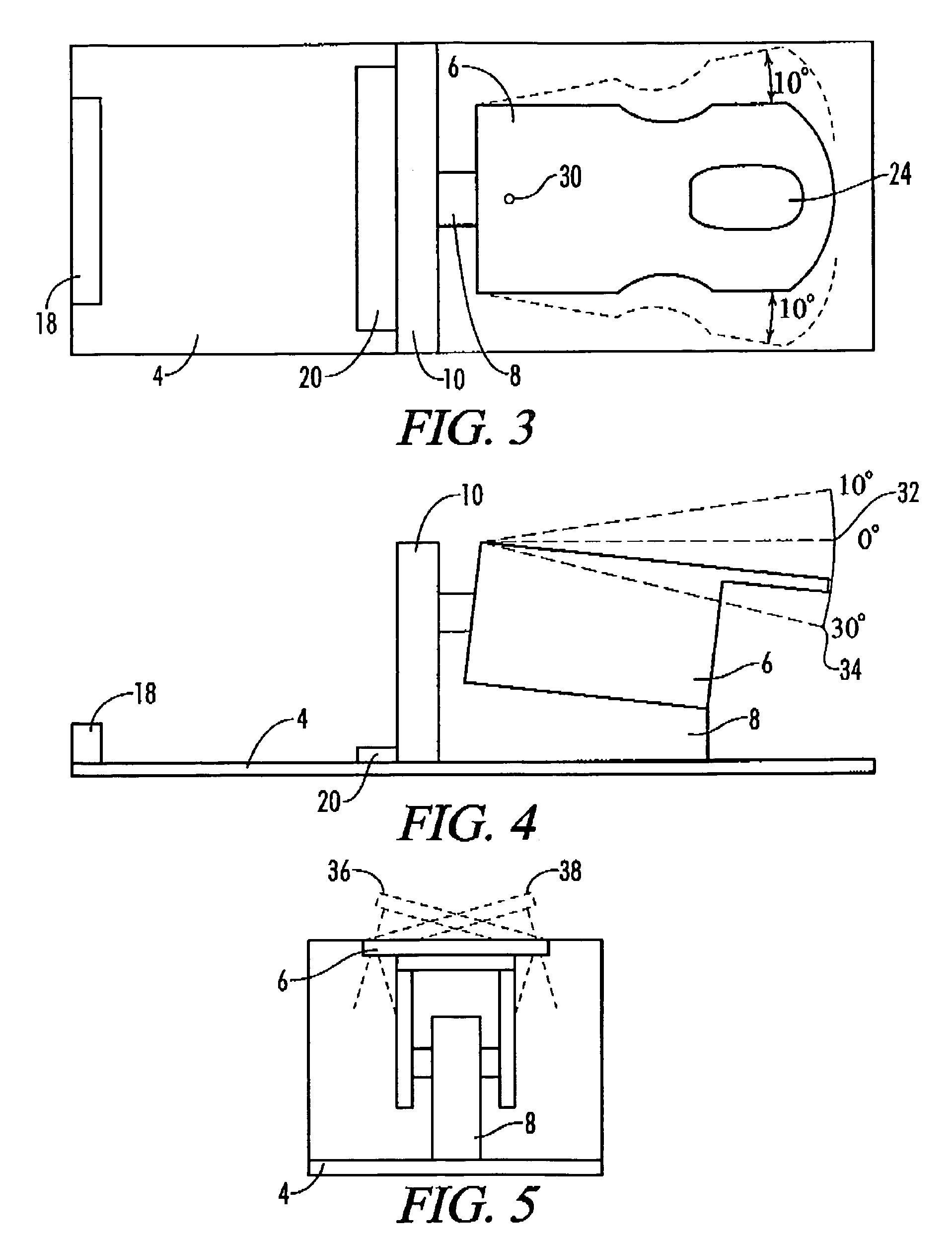Spinal traction device and method
a spinal traction and traction device technology, applied in the field of medical spinal traction devices, can solve the problems of many prior art devices being bulky, difficult to install and/or use, and often suffering from a number of drawbacks
- Summary
- Abstract
- Description
- Claims
- Application Information
AI Technical Summary
Benefits of technology
Problems solved by technology
Method used
Image
Examples
Embodiment Construction
[0015]Referring now to FIGS. 1 and 2, a preferred embodiment of the present lumbar traction device 2, for treating back problems associated with compression of the spine is shown. The lumbar traction device 2 is mounted on a substantially flat base 4 that is designed to rest on a substantially flat surface such as a floor. A moveable body sled 6 for supporting the upper torso of a user is slideably coupled to a sled support 8 with extension glides, tracks, or bars that allow for forward and backward horizontal motion. Alternatively, rockers or gliders can be used to provide forward and backward movement to the body sled 6 in a manner similar to that used in conjunction with a rocking chair.
[0016]The sled support 8 is firmly secured to the flat base 4. A cushioned head support 11 having a facial opening 24 for receiving the face of a user lying face down on the body sled 6 extends from the body sled 6. A thigh rest 10 for restraining the lower torso of a user is positioned in close p...
PUM
 Login to View More
Login to View More Abstract
Description
Claims
Application Information
 Login to View More
Login to View More - R&D
- Intellectual Property
- Life Sciences
- Materials
- Tech Scout
- Unparalleled Data Quality
- Higher Quality Content
- 60% Fewer Hallucinations
Browse by: Latest US Patents, China's latest patents, Technical Efficacy Thesaurus, Application Domain, Technology Topic, Popular Technical Reports.
© 2025 PatSnap. All rights reserved.Legal|Privacy policy|Modern Slavery Act Transparency Statement|Sitemap|About US| Contact US: help@patsnap.com



